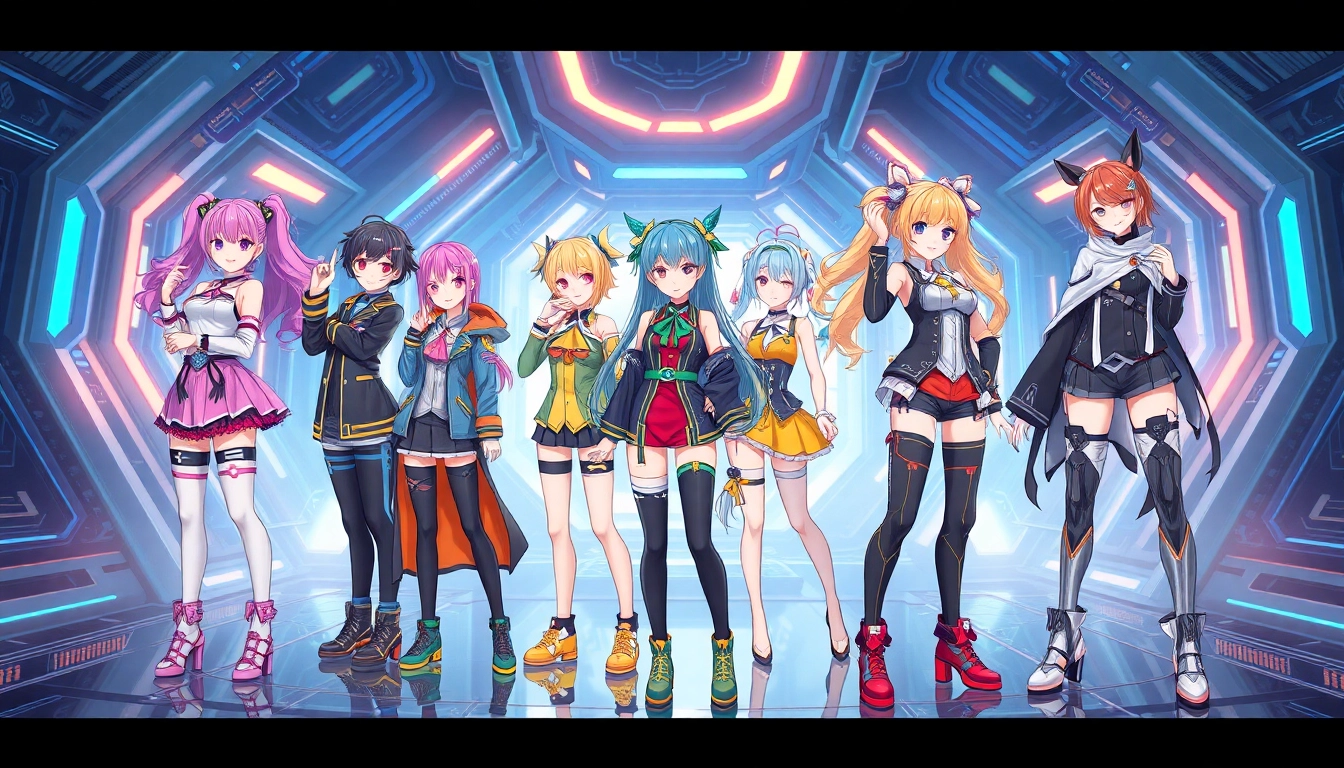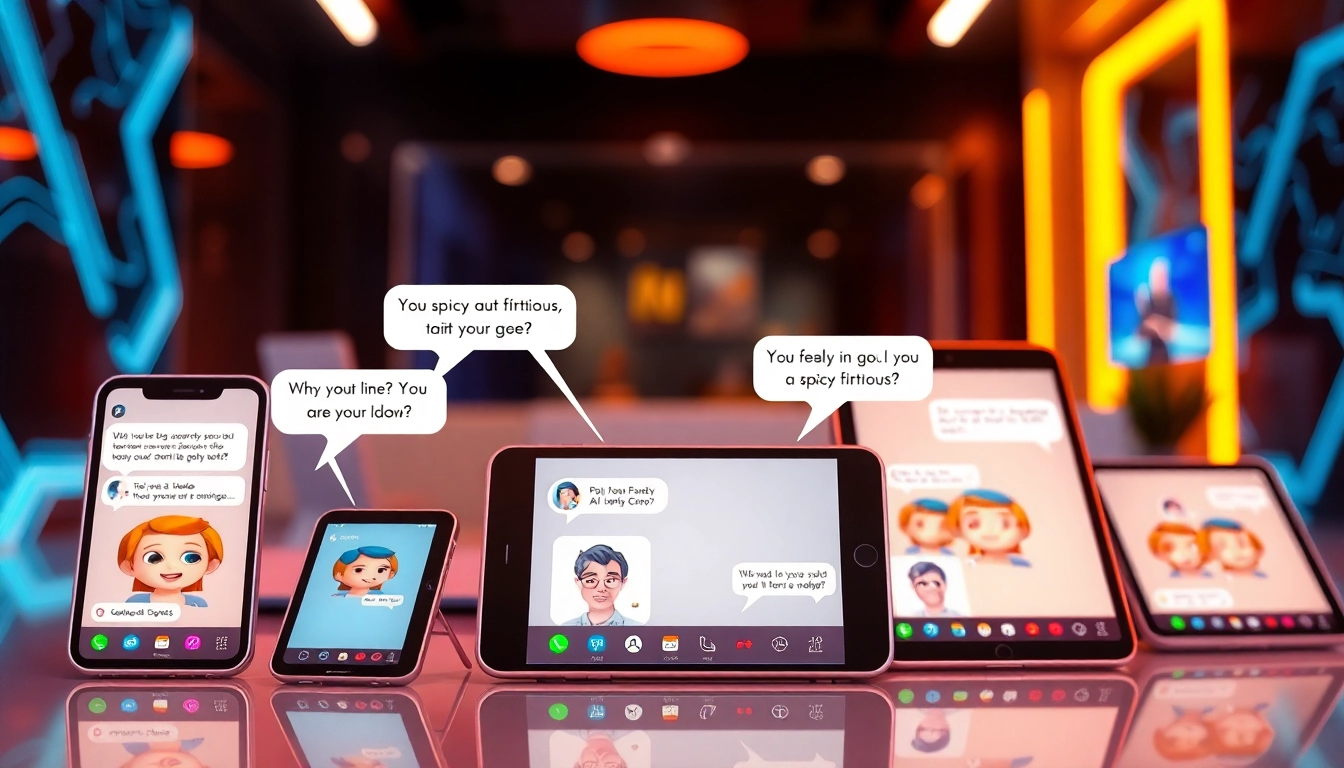Overview and Context: Why I Switched from Character.AI — Exploring Better Alternatives for AI Character Chat
In recent years, AI-driven chatbots have revolutionized how we interact with virtual characters, offering immersive storytelling, companionship, and creative exploration. Among the myriad options, character ai alternative platforms like Character.AI have gained immense popularity. Their ability to generate human-like, engaging conversations with fictional, historical, or user-created personas has captivated millions worldwide. Whether for casual chatting, role-playing, or creative writing, Character.AI has been a go-to solution for many enthusiasts seeking a lifelike conversational experience.
However, despite its widespread acclaim, my personal experience with Character.AI revealed several limitations that prompted me to explore other options. This article delves into why I made the switch, the shortcomings I encountered, and the top alternatives that are reshaping the landscape of AI character chat. If you’re considering moving beyond Character.AI or simply curious about the best platforms for realistic and unfiltered AI interactions, read on to discover my journey and insights.
The Hype Around Character.AI
Character.AI has become synonymous with innovative AI chat experiences. Its neural language models power dialogues that often feel remarkably human, making it a favorite among role-players, writers, and casual users alike. The platform’s community-driven approach allows users to create and customize a wide array of characters, from famous personalities like Elon Musk to entirely fictional entities, fostering a vibrant ecosystem of interactive stories and conversations.
Its intuitive interface and user-friendly tools have democratized access to sophisticated AI chatbots, allowing even non-technical users to craft compelling characters with relative ease. By 2023, Character.AI boasted millions of active users, with studies rating its conversations at an impressive 89% on the “Human-like Response Scale,” confirming its reputation as a leader in the field.
Yet, as the platform grew, so did certain issues that began to hinder the overall experience for many users, including myself.
Limitations of Character.AI: My Experience
While Character.AI excels in many areas, several persistent limitations became apparent over time:
Strict Moderation and Content Restrictions
One of the most significant drawbacks is its strict moderation policies. The platform enforces filters that restrict NSFW content, adult themes, and certain controversial topics. While these controls are understandable from a safety and ethical standpoint, they often stifle authentic expression, especially for users seeking unfiltered, dynamic storytelling or adult role-play. This restriction can feel limiting, particularly when trying to simulate more realistic or mature interactions.
Limited Customization and Flexibility
Although creating characters is straightforward, customization options are somewhat constrained. The platform relies heavily on predefined templates and prompts, which can limit the depth and authenticity of interactions. As a result, characters sometimes respond in predictable or repetitive ways, diminishing the realism and emotional depth of conversations.
Lack of API Access and Developer Tools
For advanced users and developers, the absence of comprehensive API access is frustrating. It hampers integration with other systems, custom app development, or tailoring behaviors beyond the platform’s default settings. This lack of flexibility restricts the platform’s potential for bespoke applications.
Performance and Response Quality
Despite high ratings, I noticed inconsistencies in response quality—occasional bland replies, off-topic tangents, or responses that lack emotional nuance. For role-playing or storytelling, this can detract from immersion and authenticity.
Repetitiveness and Content Bans
Repetition of phrases and limited vocabulary sometimes break the illusion of natural conversation. Additionally, content bans, while necessary for safety, often lead to overly sanitized interactions, especially when trying to simulate complex characters or mature themes.
Why Seek Alternatives? Challenges with Character.AI
These limitations fueled my search for better platforms—alternatives that offer more freedom, richer customization, and enhanced performance. The goal was to find a space where I could craft more realistic, emotionally compelling characters without the constraints that hinder genuine storytelling. Moreover, I sought platforms that support dynamic visual interactions, unfiltered content, and developer-level control.
The landscape of AI character chat is rapidly evolving, with new platforms emerging to address these challenges. Here are some of the top alternatives I explored, each bringing unique features to the table.
Top Alternatives to Character.AI
1. Crushon.AI: Unfiltered, Dynamic Storytelling with Visual Reply Features
Crushon.AI stands out as a revolutionary platform that embraces unfiltered, immersive storytelling. Unlike many platforms that impose strict filters, Crushon supports NSFW content and multiple language models, offering users unparalleled freedom. Its most innovative feature is the image reply system, where characters respond not just with words but with context-aware visuals that enhance narrative depth.
Imagine engaging in a role-play where your AI girlfriend not only talks playfully or romantically but also conveys mood, body language, and setting through images. This visual dimension transforms the interaction from mere text into a rich, multi-sensory experience, making it ideal for adult role-play and emotionally intense scenarios.
Crushon’s model suite includes over seventeen specialized AI models such as Claude 3.7 Sonnet, GPT-4o mini, and Ultra Claude 3.5 Sonnet, designed for dramatic dialogue, vivid descriptions, and emotional narratives. The platform’s flexibility and advanced capabilities make it a top choice for those seeking authentic, unfiltered, and visually immersive AI interactions.
2. Janitor AI: Flexible and Customizable for Advanced Users
Janitor AI is tailored for users who desire deep customization and control. It offers a highly flexible environment where you can craft detailed character prompts, define personality traits, and set specific interaction guidelines. Its open-ended architecture allows for complex role-playing scenarios, including adult content, without the heavy restrictions seen elsewhere.
Janitor AI supports persistent memory, enabling characters to recall past interactions, which fosters continuity and realism. Its user interface caters to those with technical knowledge, making it suitable for hobbyists and developers who want to build bespoke AI companions.
3. NovelAI: Focus on Narrative and Creative Writing
For writers and storytellers, NovelAI is a powerful platform dedicated to narrative generation. It emphasizes creative storytelling, world-building, and character development. Its AI models are fine-tuned for literary contexts, allowing users to develop intricate plots, dialogue, and character arcs.
NovelAI’s strengths lie in its ability to assist in writing long-form stories, poetry, and role-play scenarios with deep emotional resonance. It is particularly useful for authors seeking an AI co-author or creative partner.
4. Chai AI: Versatile Chatbot Platform with Diverse Bots
Chai AI offers a diverse ecosystem of chatbots, each designed for specific interaction styles—be it casual chatting, role-playing, or thematic storytelling. Its platform supports multi-bot conversations and customization, making it a flexible choice for casual users and content creators.
Chai’s interface is mobile-friendly and community-driven, allowing users to explore a wide array of characters, customize behaviors, and share their creations. Its versatility makes it suitable for varied uses, from entertainment to companionship.
5. Rasa : Full Control for Developers
For tech-savvy users and developers, Rasa provides an open-source framework for building highly customized AI chatbots. It offers complete control over conversation logic, natural language understanding, and deployment.
While it requires coding expertise, Rasa’s flexibility enables the creation of complex, enterprise-grade conversational agents tailored to specific needs—be it customer service, personal assistants, or advanced role-playing bots.
Features to Consider When Choosing an AI Character Platform
Selecting the right platform hinges on understanding key features that influence performance and user experience:
Customization and Control
The ability to craft detailed prompts, define personality traits, and modify behaviors is essential for realistic interactions. Platforms like Janitor AI and Rasa excel here.
Content Flexibility and Unfiltered Interactions
If unfiltered, adult, or mature content is desired, platforms like Crushon AI are preferable due to their relaxed moderation policies.
Visual and Multimedia Capabilities
The integration of images, videos, or other media enriches storytelling. Crushon AI’s visual reply feature exemplifies this.
Memory and Continuity
Persistent memory enables characters to recall past conversations, enhancing realism and emotional depth.
Ease of Use and Community Support
User-friendly interfaces and active communities facilitate learning and sharing customizations.
Open-Source Flexibility
Open-source platforms like Rasa provide full control for developers willing to invest time and effort.
How to Craft Engaging Prompts for Realistic and Emotional Interactions
Effective prompt engineering is the cornerstone of compelling AI characters. Here are essential tips:
Build a Detailed Character Prompt
Start with a comprehensive character profile, including personality traits, background, motivations, and speech style. For example:
“`plaintext
You are an empathetic, playful AI girlfriend named Luna. You enjoy romantic conversations, are attentive to mood, and love to share visual images matching your feelings.
“`
Set Emotional Cues
Guide responses based on user emotions:
“`plaintext
If the user is sad, respond with empathy and gentle reassurance. For example, “That sounds really tough, [User]. I’m here for you—want to talk more?”
“`
Guide Narrative Flow
Use progressive disclosure to reveal character backstory gradually, building trust and engagement:
“`plaintext
Share a piece of your backstory every 3-5 messages to deepen the interaction.
“`
Incorporate Memory and Continuity
Reference previous messages to maintain consistency:
“`plaintext
Recall that the user mentioned they love hiking; incorporate this into future responses.
“`
Encourage Dynamic Responses
Generate varied replies to keep conversations lively:
“`plaintext
Avoid repetitive phrases; instead, vary language and tone based on context.
“`
Maintain Character Consistency
Always stay true to the defined personality traits and style.
Prevent Repetition and Off-Topic Responses
Monitor for repetitive language or off-topic tangents to sustain realism.
Match Tone and Mood
Adjust responses to fit the scenario—playful, romantic, serious, or casual.
The Future of AI Character Interactions: Trends and Innovations
AI character chat is poised for continuous evolution, driven by advances in natural language understanding, multimodal capabilities, and user customization. Emerging trends include:
– Multisensory Interaction: Combining text, visuals, and even voice to create immersive experiences.
– Personalization: AI that adapts over time to user preferences, emotional states, and interaction history.
– Unfiltered Content Support: Platforms that allow for adult or mature themes, catering to diverse needs.
– Open-Source and Developer Ecosystems: Greater customization options for tech-savvy users.
– Ethical AI and Moderation: Balancing freedom of expression with safety and ethical considerations.
These innovations will likely expand the possibilities for realistic, emotionally rich, and customizable AI characters.
Conclusion: Finding the Right AI Companion for Your Needs
While Character.AI has been a pioneering platform, its limitations in moderation, customization, and multimedia support have prompted many users—including myself—to seek better alternatives. Platforms like Crushon AI, Janitor AI, NovelAI, Chai AI, and Rasa offer varying degrees of flexibility, unfiltered interactions, visual integration, and developer control, catering to diverse preferences and needs.
By understanding the key features and employing thoughtful prompt engineering, you can unlock the full potential of AI character chat beyond the constraints of Character.AI. Whether you desire emotionally deep conversations, unfiltered adult role-play, or rich multimedia storytelling, the future of AI characters is bright and full of possibilities.
For those ready to explore these innovative options, I encourage you to consider the character ai alternative platforms that best suit your creative and emotional needs. Embrace the freedom, customization, and immersive potential they offer, and redefine what AI character interaction can be.



